Katana Prices Explained: How Much Does a Real Katana Cost?

What’s in this article?
The price of a katana sword is influenced by various factors, including whether it is a replica, a newly-made nihonto (authentic Japanese sword), or an antique. Katana swords are available at various price points, ranging from $60 to $200,000 or more. Traditionally-made ones by licensed swordsmiths in Japan can be quite expensive and valued on their own merits. On the other hand, entry-level katana for practice or display purposes are more affordable.
Let’s explore the different factors that determine the price of katana swords, their price ranges in the current market, and how to distinguish if a blade is reasonably priced.
The Purpose and Intended Use of a Katana Sword
Before investing in a katana sword, it is essential to evaluate your preferences, budget, and the intended use of the blade, be it for martial arts training, decorative purposes, or investment.
1. Martial Arts
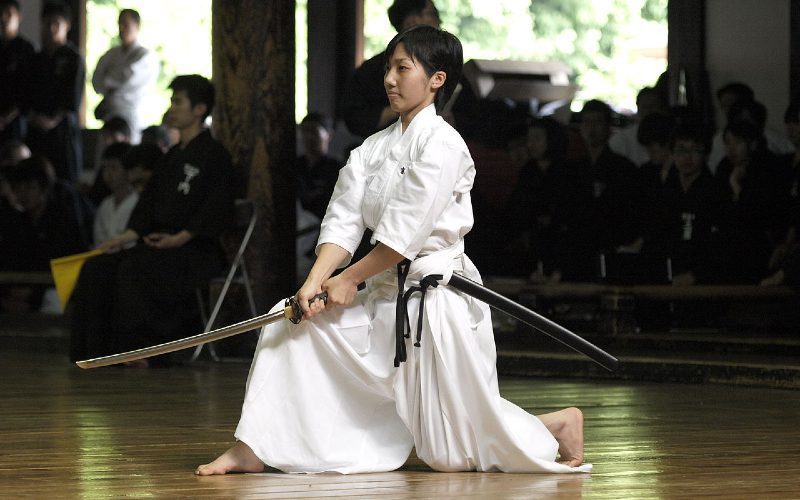
In iaido, practitioners use a training sword called iaito, which has an unsharpened metal blade for safety reasons. It is only used for solo forms and scabbard (saya) practice, not contact drills. When it comes to tameshigiri (test cutting practice), advanced practitioners opt for a shinken, a real katana sword with a sharp blade.
Antique katana swords (nihonto) hold significant value and are not commonly used for martial arts practice. Utilizing them in such activities can potentially diminish their value. Due to sword laws and regulations in Japan, martial arts practitioners use newly-made katana (nihonto) for tameshigiri, as they have sturdy blades.
Outside of Japan, tameshigiri is often performed using katana replicas equipped with sharp steel blades. These replicas are crafted to resemble the traditional katana swords, both in terms of appearance and functionality. While they may not possess the historical or cultural significance of authentic Japanese swords, these replicas are designed to withstand the rigorous demands of test-cutting exercises.
2. Decoration and Collection
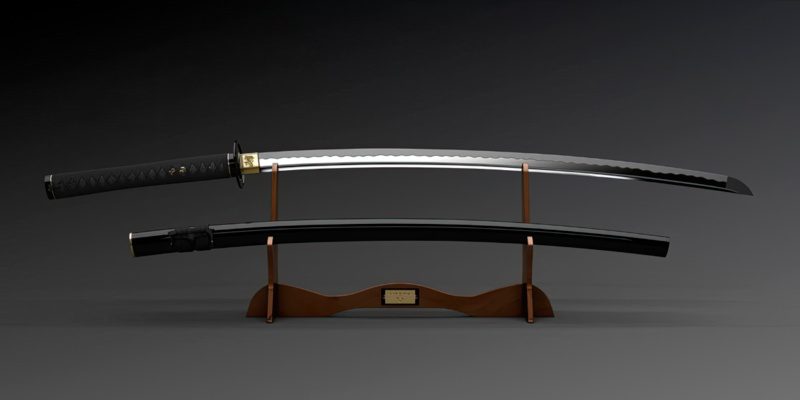
Are you looking for a decorative piece to display on the wall? If you’re interested in a wall, desk, or fireplace ornament, it might be worth considering the wide variety of katana replicas currently on the market. These replicas are generally more affordable and require less maintenance than authentic katana (nihonto).
3. Investment
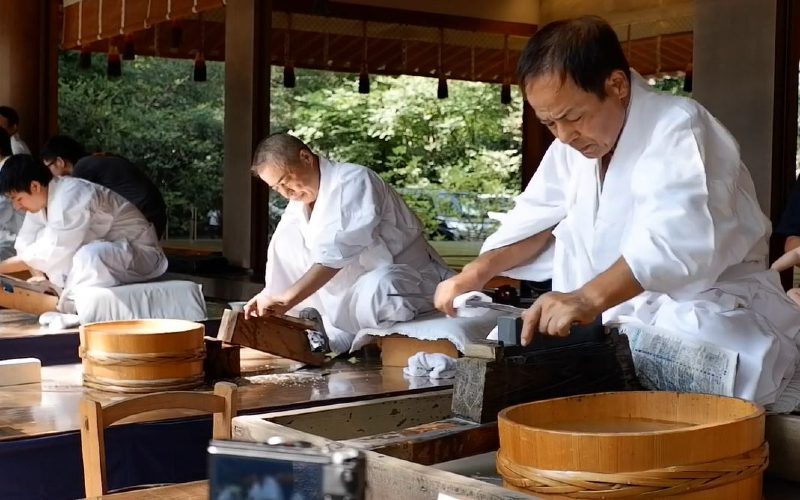
Katana swords (nihonto) made by Japanese swordsmiths are investment-grade swords. Ideally, these swords should be accompanied by appraisal papers issued by reputable sword organizations in Japan to authenticate their quality and authenticity. More than that, having such documentation will make the sword easier to sell in the future by assuring potential buyers of its authenticity.
However, be cautious when acquiring swords through online auctions unless you have gained expertise in the field. It is very challenging to assess the true condition of a blade with poor photographs and incomplete descriptions. If you choose to buy on an online auction, consider sellers who have a good reputation.
Range of Katana Prices: From Affordable to High-End

Numerous sword dealers online offer traditionally-made katana swords (nihonto), both antique and newly-made, and replicas in various price ranges.
Replica Prices
$60 – $500 (Affordable Replicas) – Katanas in this price range are usually for decorative or display purposes. Iaito for iaido practice also often runs in this price range. Both aren’t considered real katana as they have unsharpened blades, usually made of zinc-aluminum, nickel alloy, or stainless steel, which are unsuitable for cutting. Some katana replicas are also equipped with sharp blades suitable for light cutting.
$500 – $4,000 (Quality Replicas) – Katana replicas greatly vary in the material and tempering process used. It is important to note that replicas often do not possess the complex blade construction found in authentic katana swords, such as a soft core for shock absorption.
Replicas in this range are often machine-made and utilize a single type of steel. However, with proper heat treatment, their blades can still display a genuine hamon and may be suitable for tameshigiri or test-cutting practice. Many of these replica swords also come with a Saya (Scabbard) and customized koshirae (Japanese sword mountings), Tsuka (Handle), Tsuba (Sword Guard) etc.
There is a price gap, approximately between $4000 and $8,000, where it’s challenging to find many NEW katanas. If you do find them, they are either too expensive for a replica or too cheap for an authentic katana. Based on our intensive research, Z-Sey Swords offers some of the priciest replicas. However, they are the closest thing you can get to an authentic katana.
Newly Authentic Katana Prices
$8,000 or higher (Made by Young Smiths) – Katanas in this group are often newly-made swords (nihonto) by young smiths. In Japan, swordsmiths have licenses and practice sword making as a means of cultural preservation. Under governmental regulations, each swordsmith can produce a maximum of two long swords, such as a katana or tachi, or three shorter blades, such as wakizashi or tanto daggers, per month.
Regarding the pricing, the costs can vary depending on the individual smith. Generally, $8,000 or more typically covers the basic blade, which is in good polish and includes a habaki (blade collar) and shirasaya (plain wooden scabbard). However, the price of a custom-made katana blade is determined on a case-by-case basis.
The inclusion of a traditional koshirae typically adds at least $3,000 or more. Due to sword laws and regulations in Japan, iaido practitioners typically use shinken made by lower-ranked or young smiths rather than high-quality art swords. Generally, an iaido practitioner would prioritize balance, weight, and length rather than artistic qualities.
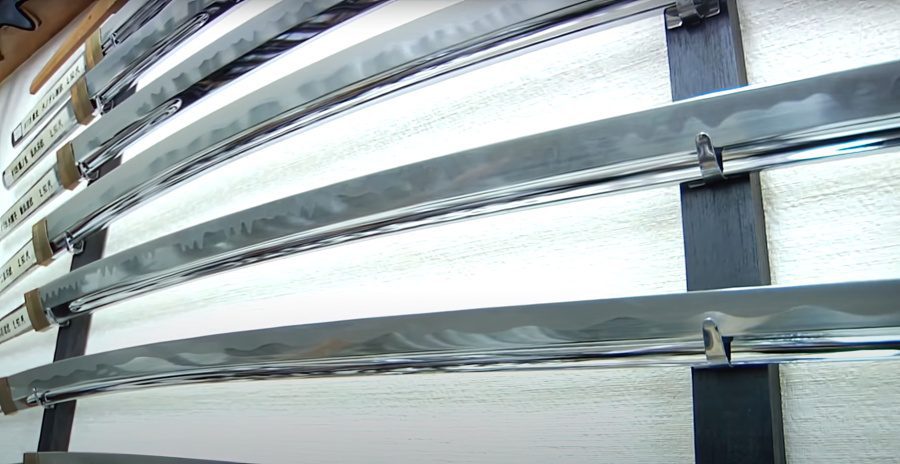
$50,000 or higher (Made by Famous Smiths) – This price point oven features newly-made katana swords (nihonto) made by famous smiths. As previously mentioned, swordsmiths are restricted to producing only two long swords monthly. Therefore, the considerable cost is due to the limited production of katanas that are often in high demand and a limited supply of blades made by top swordsmiths (Mukansa level and above). These blades are also valued for their exceptional artistic qualities.
Antique Authentic Katana Prices
$5,000 – $50,000 (Made by Less Famous Smiths) – For antique katana swords (nihonto) made by less famous smiths, there are some relatively less expensive swords that may have flaws due to age or use, diminishing their value. While some flaws may be overlooked or repaired, others can be fatal. Ideally, these swords must have appraisal papers from reputable organizations in Japan about their quality and value.
$200,000 or higher (Made by Famous Smiths) – At the highest end are antique katana swords (nihonto) made by famous makers. Many of these are representative or typical works of a particular smith, school, or province in which they were produced. Their uniqueness and historical significance contribute to their high price.
To further authenticate their quality and value, these antique katana swords ideally come with appraisal papers from the Nihon Bijutsu Token Hozon Kyokai (NBTHK) or the Nihon Token Hozon Kai (NTHK). These appraisal papers will confirm the sword’s authenticity, provenance, and quality.
Factors That Impact the Price of a Katana
Traditionally-made katana swords (nihonto) crafted by Japanese swordsmiths are held to high standards and valued based on factors such as the maker, age, origin, condition, and quality. On the other hand, katana replicas vary greatly in their material, construction, tempering, and purpose, which directly influence their cost.
1. Swordsmith
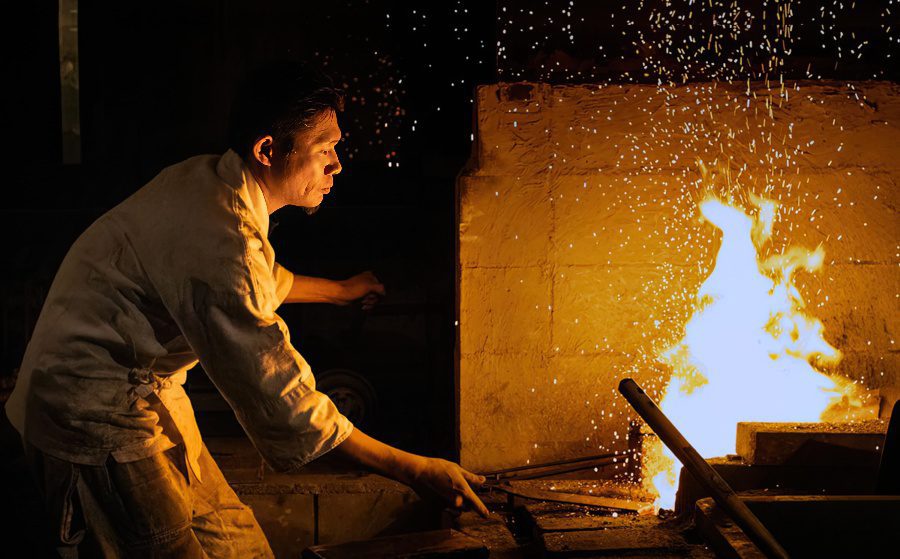
The value of katana swords, especially newly-made ones, is closely associated with the ranking of the swordsmith. The NBTHK (Society for the Preservation of Japanese Art Swords) holds an annual sword making competition, and the more awards a swordsmith receives, the better, and more valuable one’s works become.
To assess the reasonable price of a katana sword, one must compare blades made by similar-ranked swordsmiths or the same maker in the current market. It is important to note that a swordsmith’s ranking does not always guarantee consistent quality across all their works. If a katana blade deviates from the swordsmith’s typical style, its value may be lower compared to a blade that represents their standard work.
2. Antique or Newly-Made
Old or antique katana swords, particularly those attributed to famous swordsmiths or historical periods, can be exceptionally valuable and more expensive than newly-made ones. Generally, old and antique katana swords undergo shinsa (formal sword appraisal or examination) to establish their authenticity and quality.
Official organizations in Japan, such as the NBTHK and NTHK (Nihon Token Hozon Kai), assign designations to swords based on their qualifications. These designations play a crucial role in determining the pricing of a katana. Often, old katana swords that represent a swordsmith’s typical work come with appraisal papers.
3. Quality and Condition
The quality of a katana sword is not always determined by its age. Flaws (kizu) may be present in a blade, whether resulting from forging or heat treatment. Some flaws, such as bends, cracks, and chips, are a result of their use. Occasionally, a blade may have lost its hardened edge in a fire and been re-hardened later, resulting in it no longer being original.
While not technically considered flaws, alterations to the tang, reshaping of the blade, or shortening of the blade can affect the value of a katana. As a general rule, flaws, if present, should not diminish the functionality and aesthetic value of the blade. Antique katana swords (nihonto) typically come with appraisal papers from the NBTHK and NTHK, providing information about their value and quality.
4. Blade Material and Construction
Traditionally-made katana swords (nihonto) are often crafted from tamahagane and feature a complex blade construction, giving the sword its strength, durability, and resistance to breakage. For example, a katana blade may consist of soft core steel (shingane), a harder steel jacket (kawagane), and a sharp edge steel (hagane), each with varying degrees of hardness.
On the other hand, katana replicas often utilize a single type of steel, usually high-carbon steel, medium-carbon steel, or spring steel. Some steel types may also incorporate elements like manganese, chromium, and silicon to enhance rust resistance or improve toughness and hardness.
5. Tempering

The unique differential hardening process of Japanese swords (nihonto) produces a distinct hamon pattern along the cutting edge. The hamon indicates that the swordsmith hardened the cutting edge more than the rest of the blade, optimizing its effectiveness as a weapon. The hamon also helps limit the size of nicks and damage the cutting edge may have during use. More than that, a hamon gives an artistic value to the katana blade.
Many katana replicas strive to recreate a real hamon with clay-tempered blades. With proper heat treatment, these replica blades can be suitable for test-cutting practice (tameshigiri) and may be considered battle-ready. However, many katana replicas only have acid-etched or stenciled hamon, which does not contribute to the functionality of the blade.
6. Sword Mounting
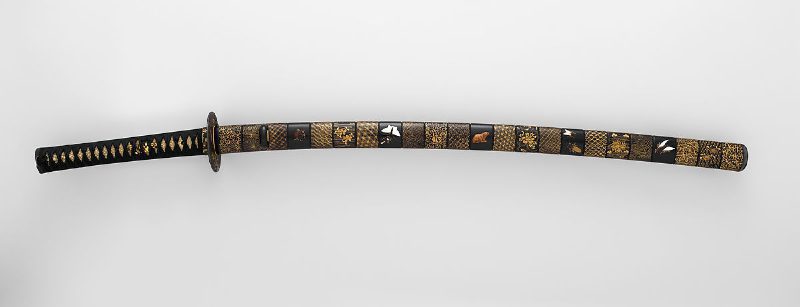
Japanese katana swords (nihonto) can be mounted in a shirasaya (plain wooden scabbard) and equipped with a habaki (blade collar). However, a complete functional mounting, known as koshirae, generally increases the price of a katana. Koshirae consists of a lacquered scabbard (saya), a sword guard (tsuba), and various components of the hilt (tsuka), such as fuchi and kashira (metal collar and pommel cap).A katana‘s hilt (tsuka) is often covered with ray skin and features a braided hilt wrapping (ito). It is also adorned with menuki ornaments on each side of the hilt and a sageo cord for securing the scabbard to the belt. Koshirae crafted by Japanese artisans are handmade, high quality, and have superior craftsmanship, making them more expensive. On the contrary, replicas are mass-produced yet often offer good quality at a lower price point.




